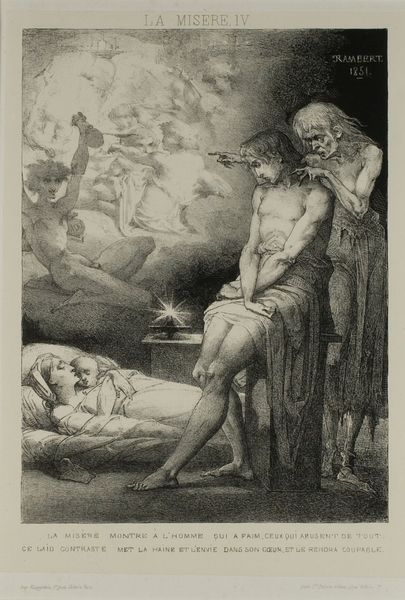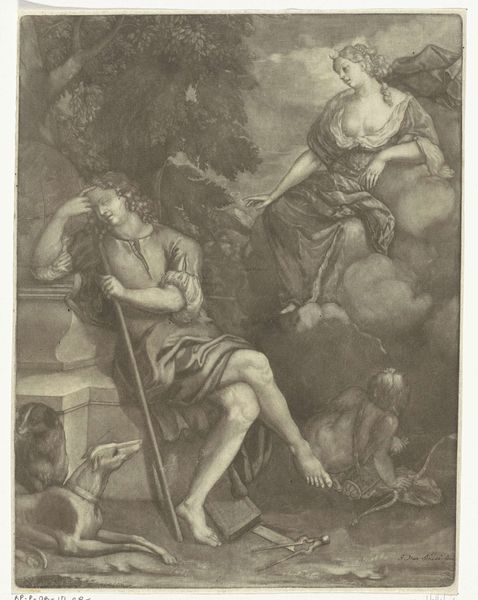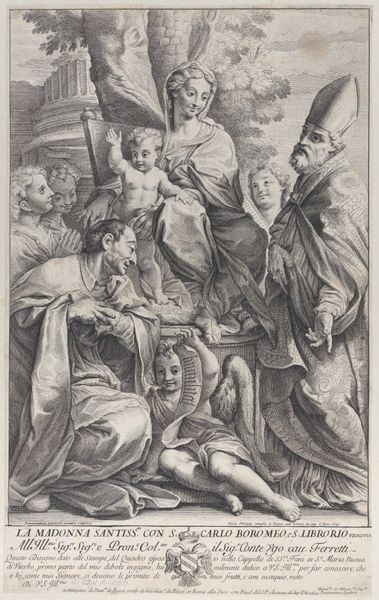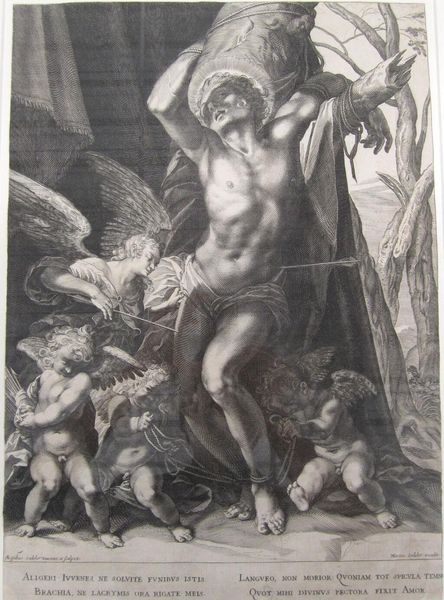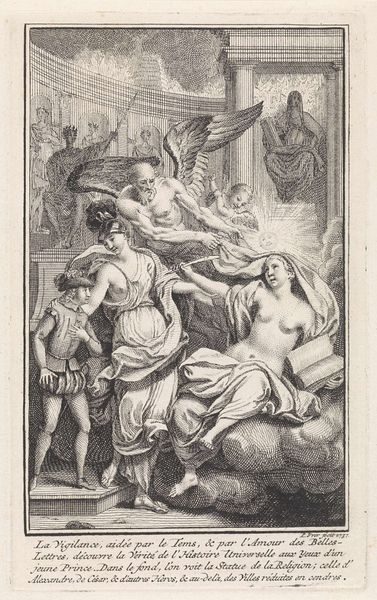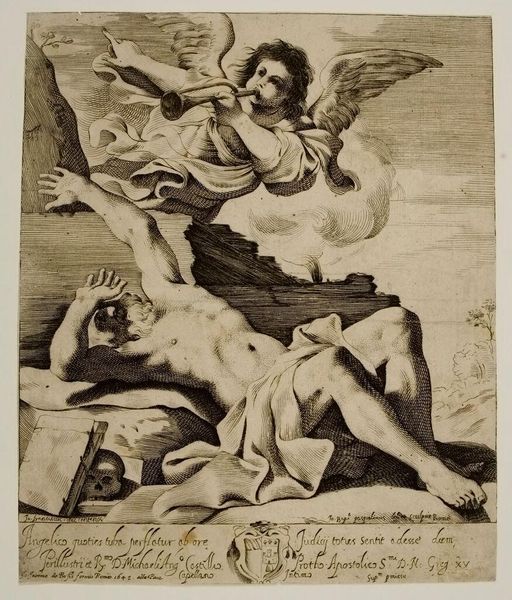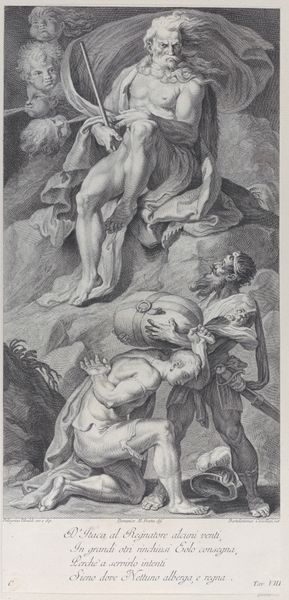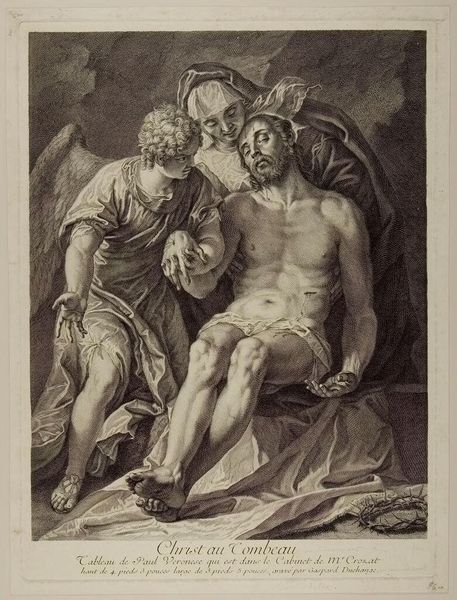
drawing, pencil
#
portrait
#
pencil drawn
#
drawing
#
neoclacissism
#
pencil sketch
#
charcoal drawing
#
pencil drawing
#
pencil
#
academic-art
Copyright: Public domain
Editor: We're looking at "Vigilant One," a pencil drawing made in 1816 by Pierre-Narcisse Guerin. I'm struck by its almost dreamlike quality, how the figures seem to float and the composition is so intricate, especially considering it's just pencil. What are your initial observations? Curator: Immediately, the Neoclassical elements stand out. Note the figure's idealized form and the precise linearity that defines the composition. Observe how the artist employs subtle gradations of tone to create depth, particularly in rendering the drapery. This meticulousness in execution emphasizes the underlying structure. Editor: So, you're saying the technical skill and the clear lines are really key here? Curator: Precisely. The subject, presumably an artist receiving inspiration, becomes secondary to the formal arrangement. How do the symbolic elements contribute to your understanding? Consider the hourglass, the extinguished candle, and the muse with her lyre. Editor: Those feel like typical symbols of art, time passing, that sort of thing. But looking at them alongside the precise drawing style, I can see how it's about control and order, even when depicting inspiration. Curator: Indeed. It invites us to decode the artist's conscious choices in presenting these motifs. Does that affect how you view the "dreamlike" quality you mentioned initially? Editor: Definitely. It shifts from simply feeling like a dream to recognizing that every element, even in a dream, is carefully constructed. It highlights the deliberate choices made to evoke such imagery using form. I appreciate that nuance. Curator: A fine conclusion. Studying the arrangement of visual elements offers fresh insights.
Comments
No comments
Be the first to comment and join the conversation on the ultimate creative platform.

